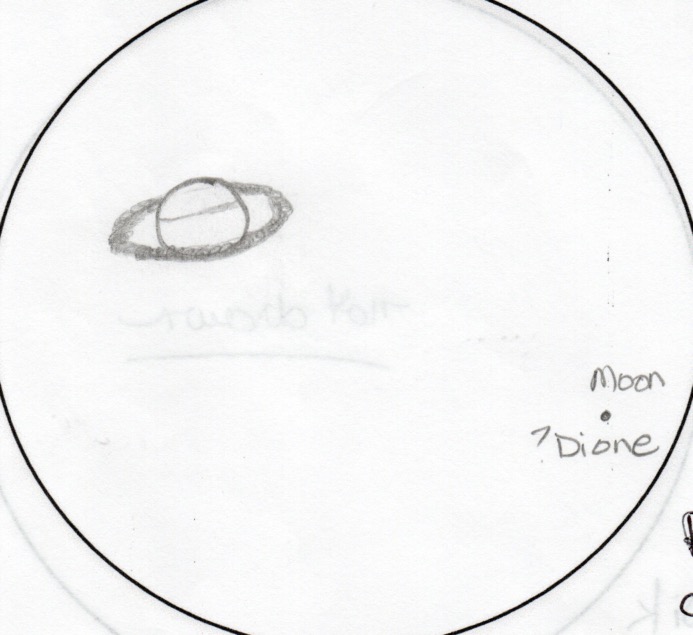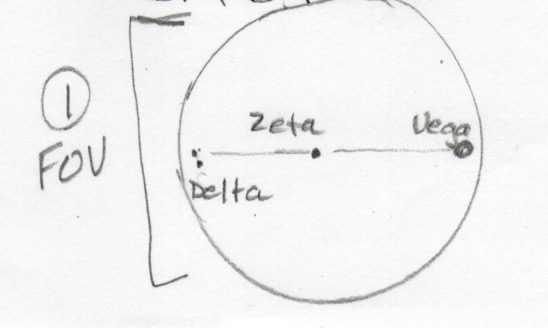I spent the earlier part of this evening (7:20 PM - 9:10 PM) exploring the Moon towards achieving the RASC Explore the Moon (Telescope) certificate.
Constellation: Boötes, Canes Venatici, Cassiopeia, Cygnus, Delphinus, Equuleus, Lyra, Ursa Major
Messier Objects: M31 (Andromeda Galaxy), M51 (Whirlpool Galaxy)
Asterism: Coathanger / Collinder 399 / Brocchi's Cluster, Square of Pegasus, Summer Triangle / DAVe
Stars: Deneb, Lyra ε1, Lyra ε2, Lyra δ1, Lyra δ2, Mizar/Alcor, Polaris, Vega
Planet: Saturn
Satellite: (2)
Meteor
Location: Home
Date: 2017-07-30
Time: 9:00 PM - 11:53 PM
Instrument: Visual + Binocular 10x30 IS + 10" Meade SCT (100 mm + 30 mm eyepieces)
Transparency: Good (3)
Seeing: Good (3)
Temperature: 19º C - 14º C
Clear skies. No wind; a small breeze mid-evening that was barely discernible. First Quarter Moon in the sky.
|
Saturn |
|
|
Ursa Major (UMa) All the stars were visible at 10:15 PM but it was 20 minutes later that Dubhe could be easily seen visually. Polaris could easily be found visually. Using the telescope at 10:44 PM, I looked at Mizar and Alcor, Mizar being the brighter of the pair. |
Cassiopeia Had no problem identify the 5 bright stars in this constellation.
|
|
Satellite Summer Triangle / DAVe |
M51 (Whirlpool Galaxy) Using the distance between Alkaid and Mizar, I looked below Alkaid just a little lesss than this distance and saw a faint, grey circular smudge. Not positive it was M51 but it was the only "smudge" in the vicinity. Next time look at the adjacent star patterns to ensure identification. |
|
Cygnus The Moon obscured the dimmer stars visually. At this time, the constellation was overhead. The stars ζ, η and ι were not easily seen visually. Used Albireo as a way to locate the Coathanger. |
Coathanger / Collinder 399 / Brocchi's Cluster Travelled down the stars of Cygnus to Albireo then found the Coathanger - all 10 stars were clearly identified.
|
|
Canes Venatici Decided to look for this constellation and one of the arms of Boötes because the sky in this direction was darker and not affected by the lights of Halifax. Using my S&T Atlas, I found this constellation lay directly below Ursa Major's handle. Specifically, Cor Caroli (α)was directly below Alkaid; this was easily found visually and I also looked for Arcturus as another guide. With my binoculars, I was able to find Cor Caroli. Jubilation at also being able to find Chara (β) with binoculars! It wasn't until I looked on the internet and at my map more closely that I discovered α was a binary star. I will look more closely next time. |
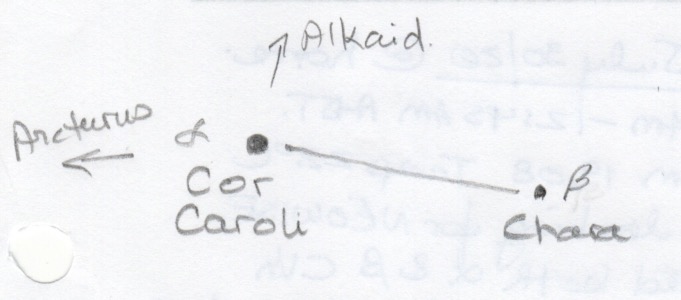 |
|
Boötes Saw most of the stars in Boötes except Seginus. Looking at the star Atlas made me want to look for an extension away from the "kite" that contained θ, κ and λ. I located Alkaid and looked one FOV above it and there it was. The 4 stars of the corner were very clear and were in 1 FOV of my binoculars. SkySafariPro helped me identify the names of the stars. I was thrilled to be able to find this group of stars using landmarks as guides. |
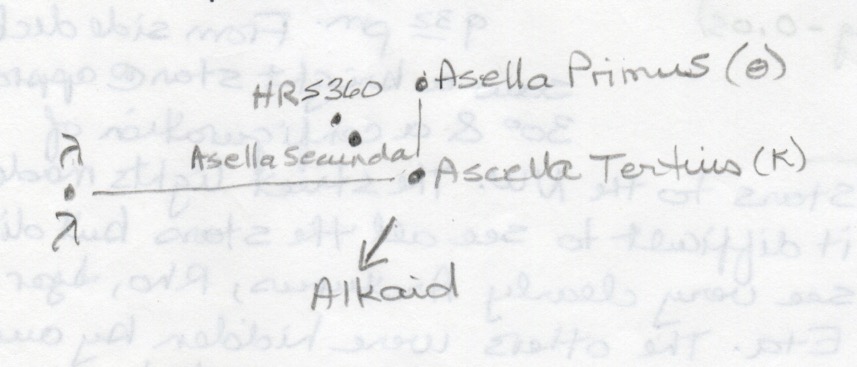 |
|
Lyra Searched for the Lyra stars in this constellation to confirm the two sets of double stars. Lyra ε1 and Lyra ε2 were easily found in binoculars. Following through Lyra ζ, I was able to locate the red and yellow Lyra δ1 and Lyra δ2 respectively. Vega, Lyra ζ, Lyra δ1 and Lyra δ2 were in one FOV and I was able to centre them in the middle of the FOV.
|
|
|
Delphinus Equuleus I looked to Delphinus and after several second found α, δ, and γ Equ. It took a while to find ε with the binoculars. In examining γ Equ, I could see two stars there - γ Equi + 6 Equ. At ε Equ, I could make out 4 Equ and 3 Equ. I didn't take the time to note the colour differentiation (if any) or brightness, Next time? |
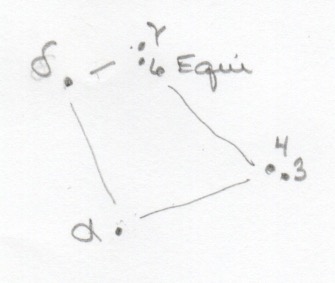 |
|
Satellite Meteor |
Pegasus M31 / Andromeda Galaxy |
